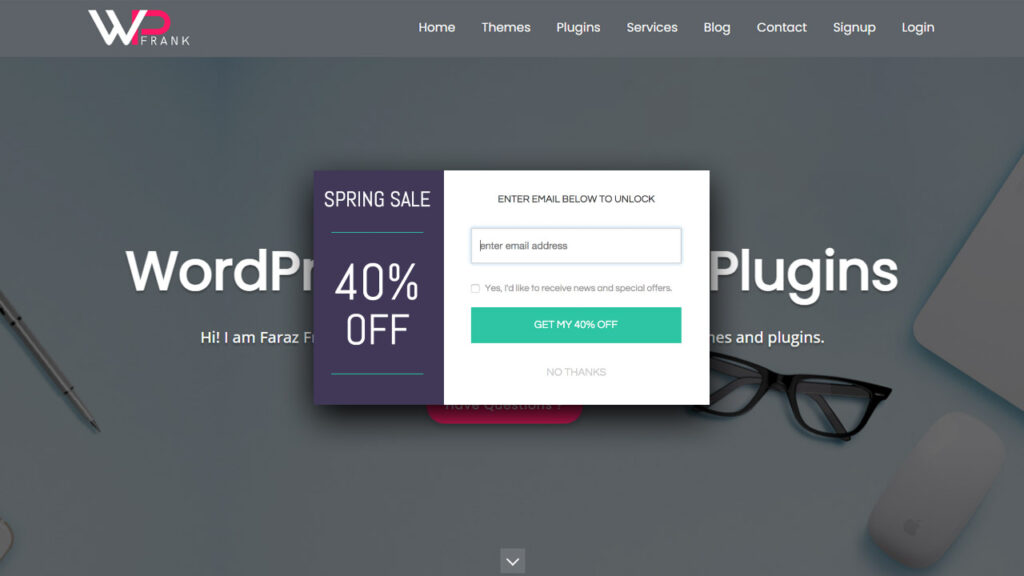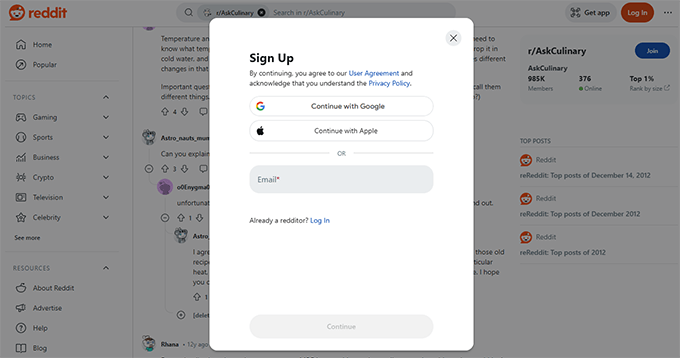
Table of Contents
Popups have become increasingly prevalent and sophisticated in recent times. Despite their widespread use, some website owners still question the effectiveness of popups. In this article, we will explore the future of popup marketing and explain why popups continue to be a relevant and powerful tool for engaging users.
Do Popups No Longer Exist?
No, Wherever you go online, savvy marketers are still using them extensively. Popups are used by thousands of users, including several Fortune 500 businesses.
Furthermore, popups aren’t limited to online retailers, corporate websites, or blogs that find success with them.
Popups are used by even the largest social networking sites, such as Reddit, Quora, and Instagram, to encourage visitors to register as users.

Even so, a lot of folks are apprehensive about utilizing popups on their mobile websites. Given the growing number of individuals accessing the internet through mobile devices, what is the effectiveness of these popups on smaller screens?
When compared to laptops, the solution is far more efficient. The annoying popups, nevertheless, are gradually disappearing.
Why are popups so effective?
Timely, relevant, and non-intrusive popups can be quite effective in increasing user engagement.
Marketers can manage the timing, visibility, and behavior of popups with the help of contemporary solutions like OptinMonster. Furthermore, well-designed popups minimize disruption to the user experience by integrating seamlessly with the website’s overall design.
Now let’s examine certain features that make popups functional on all websites.
Displaying Pop-Ups at Appropriate Times
The most crucial element is time; you don’t want a popup to appear too soon and irritate your users. However, you also don’t want to pass up the chance to turn visitors into subscribers or paying clients.
Exit Intent popups don’t come up immediately; rather, they appear just before a user is about to leave a website.
This is an excellent technique to lower bounce rates and prevent cart abandonment, particularly if your popup provides a discount code to encourage visitors to remain on your website.
Popups can also be delayed using contemporary lead generation and conversion optimization software such as OptinMonster.
Aesthetically pleasing popup
Instead of detracting from the user experience, a well-designed popup can improve it. Fortunately, marketers have improved their ability to accomplish that.
The era of tacky, gaudy popups that excessively aimed to capture users’ attention is long gone. These days, popups are smooth and blend seamlessly into the overall layout of a website.
A lot of popup builder software provides a ton of customizing choices, so you may create eye-catching popup ads.
With its drag-and-drop capabilities, using your company’s colours, logo, photos, videos, and more is simple.
To make your popups more interactive, you may even build success views, construct multi-step popups, use templates, and do anything else.
Bring Value
The majority of consumers don’t like it when a website requests their email address or other contact details without any apparent reason. Furthermore, it can come across as impolite.
Conversely, popups that give consumers a cause to contribute information also give users something in return.
This added value, whether it be in the form of a voucher for a discount or a content upgrade, feels like a good bargain.
When creating popups, it’s important to consider your value proposition and prominently highlight its benefits for users to eliminate uncertainty about signing up.
Customized Pop-Up Ads
76% of consumers say they prefer to purchase from companies that personalize their products to meet their demands.
Fortunately, marketers can now personalize their campaigns for individual customers because they have access to sufficient data.
You can target specific clients with the use of personalization by using information about their usage, website activity, geography, and other factors.
For instance, a major problem for online retailers is cart abandonment.
Over 67% of buyers leave their carts empty before finishing their transactions, according to Shopify.
Site owners can employ targeted popup ads to entice consumers at the last minute, give them a discount on an upsell, or follow up with an offer depending on their online activity.
These advertisements are effective because they cater to the specific demands of each customer and are not generic. Thus, rather than interfering with the user experience, this exact targeting makes popups feel like a natural part of it.
Creating a Google-Friendly Popup with Popups and SEO
Creating a Google-friendly popup involves balancing user experience with SEO considerations. Here are some tips to create popups that enhance your website’s usability while remaining search engine friendly:
Use popups judiciously: Avoid using popups excessively or in a way that disrupts user experience. Websites with intrusive interstitials are penalized by Google, especially if they obstruct the main content.
Mobile optimization: Ensure that your popups are mobile-friendly. Google prioritizes mobile-friendly websites, and intrusive popups that hinder mobile user experience can lead to lower search rankings.
Clear and relevant content: Make sure the content in your popup is clear, concise, and relevant to the user’s intent. Avoid misleading or deceptive content in popups, as this can harm your SEO efforts.
Easy closure: Provide a clear and easy way for users to close the popup if they choose not to engage with it. This could be a prominent close button or a simple “X” icon.
Delay or exit-intent triggers: Consider using delay triggers or exit-intent technology for popups. Delay triggers display the popup after a user has been on the page for a certain amount of time, reducing immediate intrusiveness. Exit-intent triggers detect when a user is about to leave the page and display the popup as a last attempt to engage them.
Follow Google’s guidelines: Familiarize yourself with Google’s guidelines on popups and interstitials. Google provides specific recommendations on how to use popups without negatively impacting SEO.
Consider alternative formats: Instead of traditional popups, consider using less intrusive formats such as slide-ins, notification bars, or inline forms. These formats can still capture user attention without blocking the main content.
Test and monitor: Continuously test different popup strategies and monitor their impact on user engagement and SEO. Use tools like Google Analytics to track metrics such as bounce rate, time on page, and conversion rates.
A glimpse at the future of popup marketing
The future landscape of popup marketing is likely to see several trends and changes driven by evolving user preferences, technological advancements, and regulatory considerations.
Here are a few instances of what to anticipate in the future:
- AI-driven campaign design
- AI-powered A/B testing to determine the most effective campaigns
- Greater and improved personalization
Overall, the future of popup marketing will revolve around delivering personalized, engaging, and compliant experiences that resonate with users across various devices and channels.